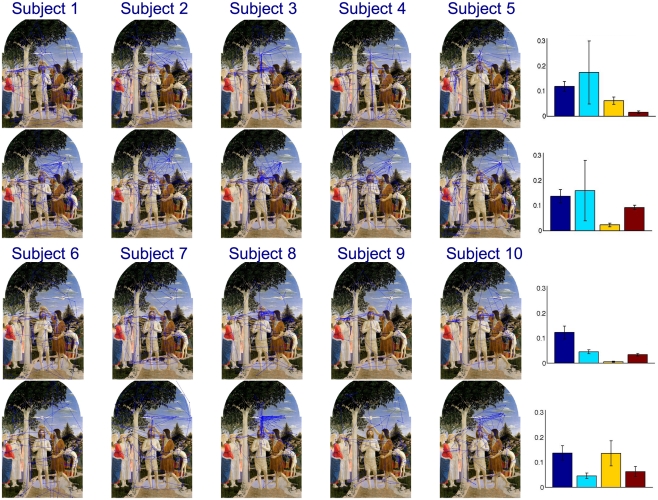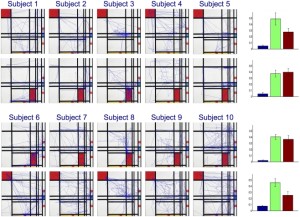(On line on Frontieres of Human neuroscience)
What principles use our brain to create an exquisite representation of the external world, the one that allow us to recognize a face, reach to an object or appreciate a piece of art?
We describe the pattern of fixations of subjects looking at figurative and abstract paintings from different artists (Molina, Mondrian, Rembrandt, della Francesca) and at modified versions in which different aspects of these art pieces were altered with simple digital manipulations. We show that the fixations of the subjects followed some general common principles (e.g., being attracted to saliency regions) but with a large variability for the figurative paintings, according to the subject’s personal appreciation and knowledge. In particular, we found different gazing patterns depending on whether the subject saw the original or the modified version of the painting first. We conclude that the study of gazing patterns obtained by using the eye-tracker technology gives a useful approach to quantify how subjects observe art.


